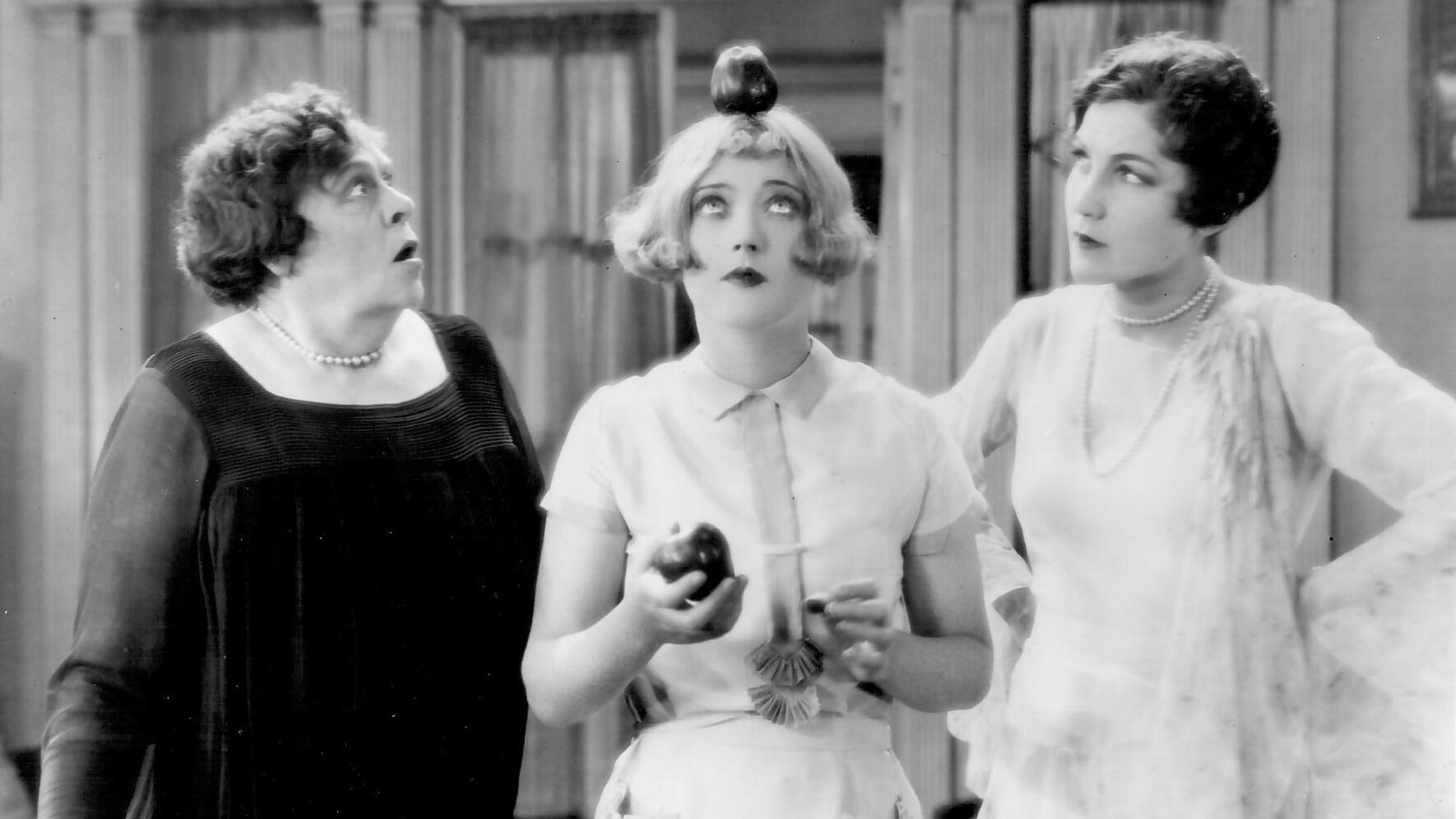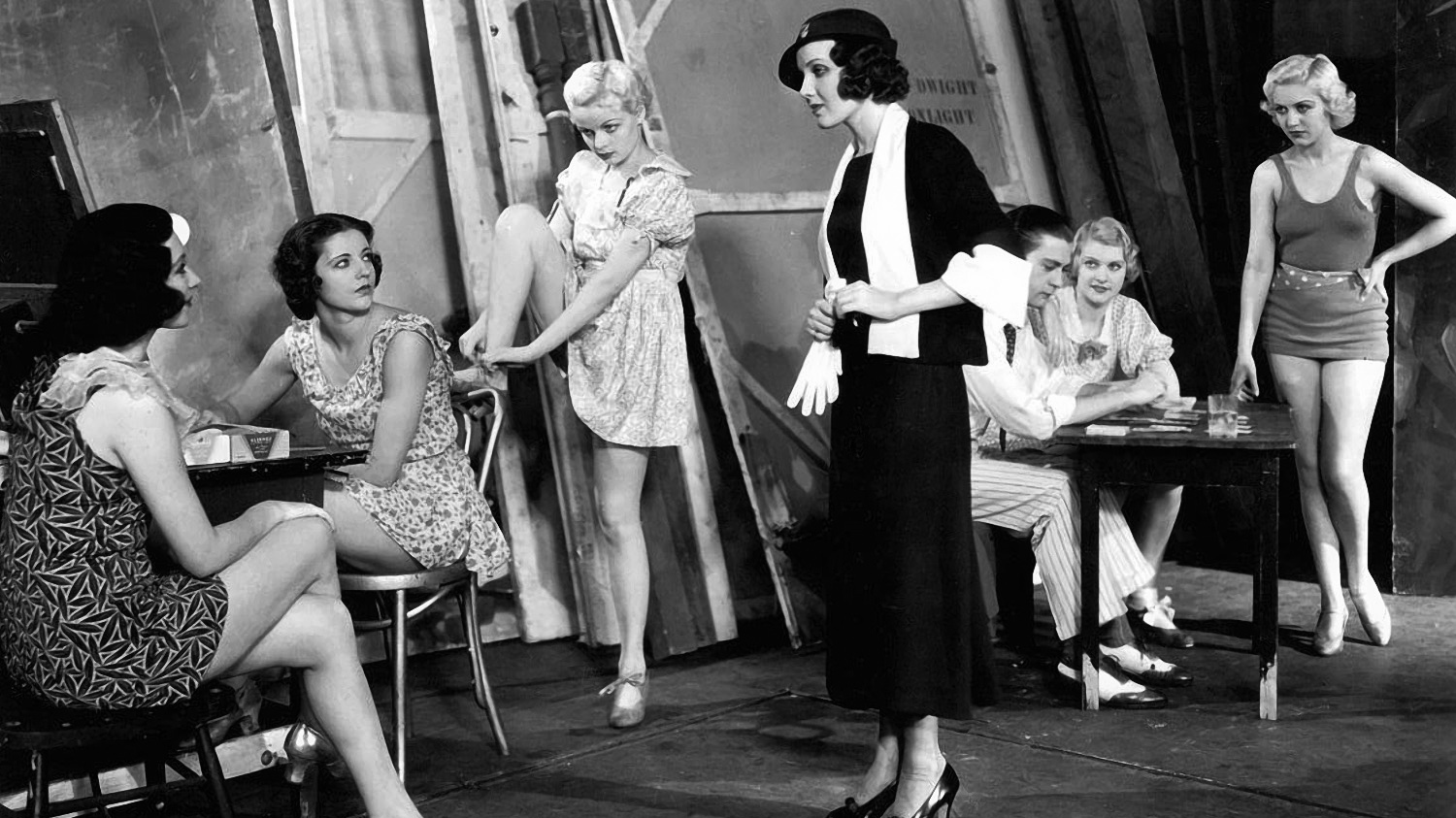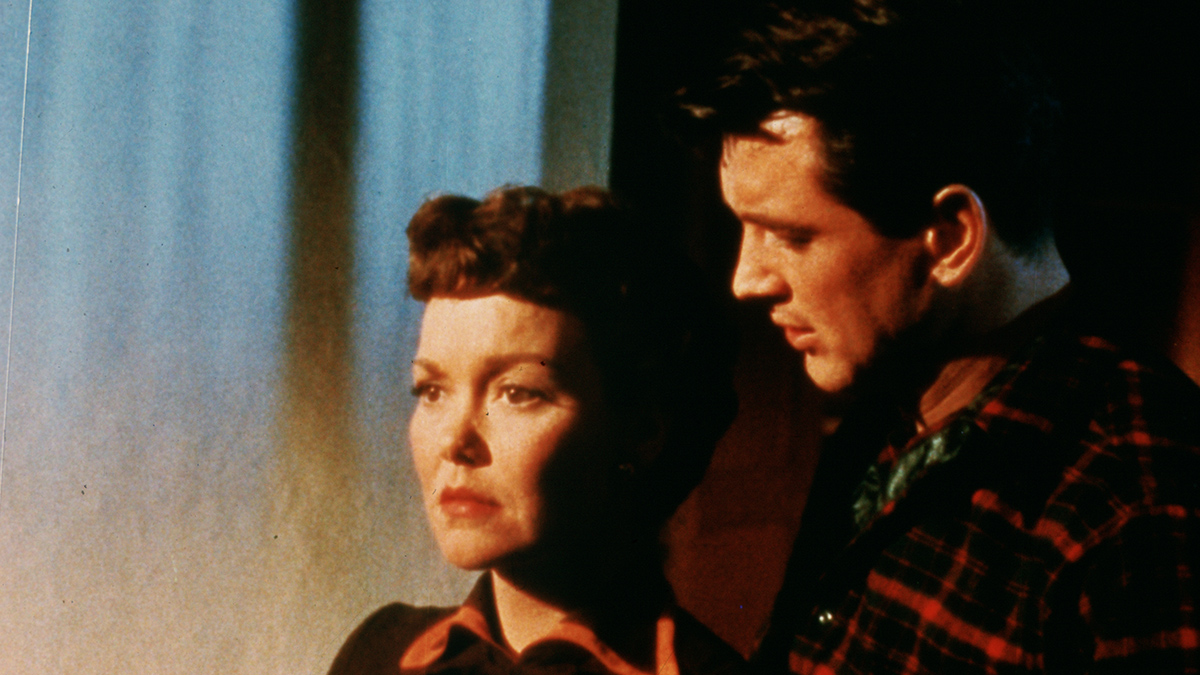Our screenings are held at multiple venues around Chicago. This season you can find us at:
• The Music Box Theatre
3733 N Southport Ave — Directions • Parking
Tickets: $11 – $12
• The Auditorium at Northeastern Illinois University (NEIU) (inside of Building E)
3701 W Bryn Mawr Ave — Directions • Campus Map
Tickets: $10
***Complimentary Parking for audience members on Wednesday nights is available in Parking Lot D adjacent to the Bryn Mawr entrance.***
Want to attend our screenings but having financial hardships? Contact info@chicagofilmsociety.org
SEASON AT A GLANCE
September ▼
Wed 9/11 at 7:30 PM
Practically Yours …………… NEIU
Tue 9/17 at 7:00 PM
Chris + Heather’s 16mm Big Screen Blowout! ……………… Music Box
October ▼
Wed 10/2 at 7:30 PM
Vagabond ………………… NEIU
Wed 10/9 at 7:30 PM
Special Effects …………… NEIU
Sat 10/12 at 11:30 AM
The King of Marvin Gardens ………. Music Box
Wed 10/16 at 7:30 PM
Trouble in Paradise …………… NEIU
Sat 10/19, 11 AM to 3 PM
Home Movie Day ………… Chicago History Museum
Sun 10/20 at 8:00 PM
Faust …………………… Music Box
November ▼
Sun 11/3 at 8:00 PM
The Patsy ………………… Music Box
Wed 11/6 at 7:30 PM
Simple Men ……………………… NEIU
Wed 11/13 at 7:30 PM
Moonlight and Pretzels ………………… NEIU
Wed 11/20 at 7:30 PM
All That Heaven Allows ………………… NEIU
Mon 11/25 at 7:00 PM
Birth ……………………… Music Box
December▼
Mon 12/2 at 7:00 PM
The Shop Around the Corner …………… Music Box
Wed 12/11 at 7:30 PM
Curse of the Cat People ………. NEIU
☆ Add the schedule to your google calendar
☆ Sign up for our newsletter for screening reminders!

Wednesday, September 11 @ 7:30pm / NEIU
PRACTICALLY YOURS
Directed by Mitchell Leisen • 1944
As he embarks on a suicide mission over the Pacific, US Navy pilot Dan Bellamy (Fred MacMurray) radios thoughts of his beloved “Piggy” to a nearby comrade. His stirring farewell, recorded by chance, is broadcast on the radio back home as comfort to an exhausted nation. Except Dan survives the attack and learns that his epitaph has been misinterpreted: Piggy is actually his pooch, but his coworkers at the Prudential Typewriter Company believe his confession referred to office accountant Peggy (Claudette Colbert). Dan’s furlough lasts only two weeks, so surely he and Peggy can keep up the rom-com ruse until he ships back, can’t they? Earlier that summer, Preston Sturges had managed to thread the needle and skewer homefront hypocrisy in palatable fashion with Hail the Conquering Hero, but director Mitchell Leisen and scripter Norman Krasna’s Practically Yours met a much harsher critical reception when it debuted in December 1944. “It has the ugly contours of a most callous and inhuman jest … This is no time to joke about grief,” concluded Bosley Crowther in the New York Times. Leisen himself dismissed the film in later years, recalling “it’s supposed to be a brilliant comedy and it was about as funny as a crutch to me.” Yet Practically Yours became a box office hit. Though its popular reception hasn’t endured, it remains ripe for reassessment. Maybe eighty years is long enough for us to come around to James Agee’s original appreciation of this “interestingly nasty” satire of super patriotism: “Lurking in a great many odd corners of the show there is a really remarkable amount and variety of receptive hatred.” (KW)
88 min • Paramount Pictures • 35mm from Universal
Preceded by: “The Atom Goes to Sea” (True Boardman, 1954) – 12 min – 35mm
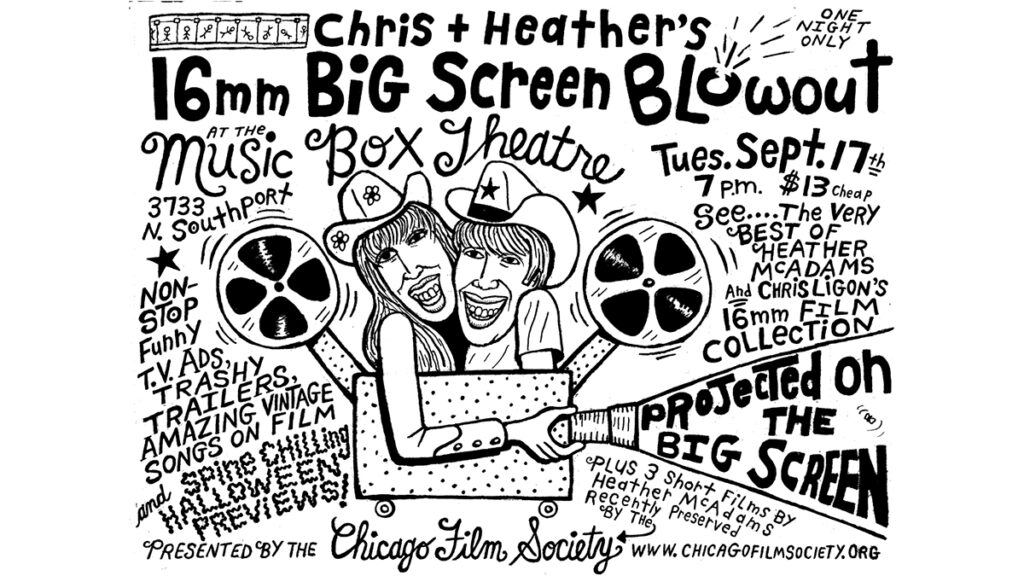
Tuesday, September 17 @ 7:00pm / Music Box Theatre
CHRIS + HEATHER’S 16mm BIG SCREEN BLOWOUT!
Artist and filmmaker Heather McAdams and songwriter and musician Chris Ligon have assembled one of the most impressive and painstakingly curated private collections of little 16mm films we know of, focusing on music films, commercials, found footage, and other true oddities which usually fall through the cracks at large, institutional film archives. Among many other things, Chris and Heather also host the legendary “Country Calendar Show,” a variety show featuring live performances and 16mm films highlighting twelve different country artists.
Chris and Heather present the very best of their 16mm film collection for a unique and inspiring evening of nonstop laughs and entertainment in their inimitable style. Drawing from their extensive collection, amassed over more than 40 years and edited in their signature “bumper to bumper” style, this selection of short subjects is sure to please everyone, especially those with a short attention span! The program includes amazing vintage trashy movie trailers for films like Superchick, Swedish Swingers, and Sex Kittens Go To College; forgotten TV commercials for goofy games like the Town Dump and toys like Puffy Fuzzy Shrinky Dinks; sensational songs by Ricky Nelson, George Jones, The Staple Singers, and more; plus four one-minute animated cartoons made by Chris and Heather for MTV in the mid 1990s and two early short experimental films by Heather McAdams, All Fucked Up and The Scratchman, recently preserved by CFS. Chris and Heather will appear live on stage to introduce the films and attempt to explain themselves!
All Fucked Up and The Scratchman preserved in 16mm by the Chicago Film Society with funding from the National Film Preservation Foundation; all other 16mm prints from Chris and Heather’s collection.
Total program length: 90 min

Wednesday, October 2 @ 7:30 PM / NEIU
VAGABOND
Directed by Agnès Varda • 1985
In French with English subtitles
Agnès Varda catapults us into the short-lived existence of Mona, a drifter whose lifeless body we first discover frozen in a ditch. She is just as the French title suggests: Sans toit ni loi (without shelter or law). Mona, portrayed by a young Sandrine Bonnaire, moves through life exactly as she pleases, following every impulse and nearly walking herself to death roaming through the south of France. Her cup is never full; she makes reckless choices without regard for the consequences to herself or others. The film presents a whirlwind of rumors and perspectives about who Mona is and how she impacts the people she encounters, who often question her moral compass and the reasons behind her lifestyle. Ultimately, their speculation is meaningless in the life of our vagabond. It would be a dream to possess confidence and ambivalence like Mona’s. It’s hard to look away from her enticing and feral charm. Those who cross her path envy and resent her. Does their jealousy stem from craving her freedom, or from finding her lifestyle unfathomable? Vagabond stands as one of Agnès Varda’s greatest successes, snatching the Golden Lion at the Venice Film Festival in 1985 and winning critical praise for merging the texture of documentary into fiction filmmaking. This is a film as stubborn and stunning as its protagonist, and it’s worth relishing its ravishing and uncanny portrayal of a woman on the road with nothing to lose. (TV)
105 min • Ciné-tamaris • 35mm from Janus Films
Preceded by: “The Dingles” (Les Drew, 1988) – 8 min – 35mm
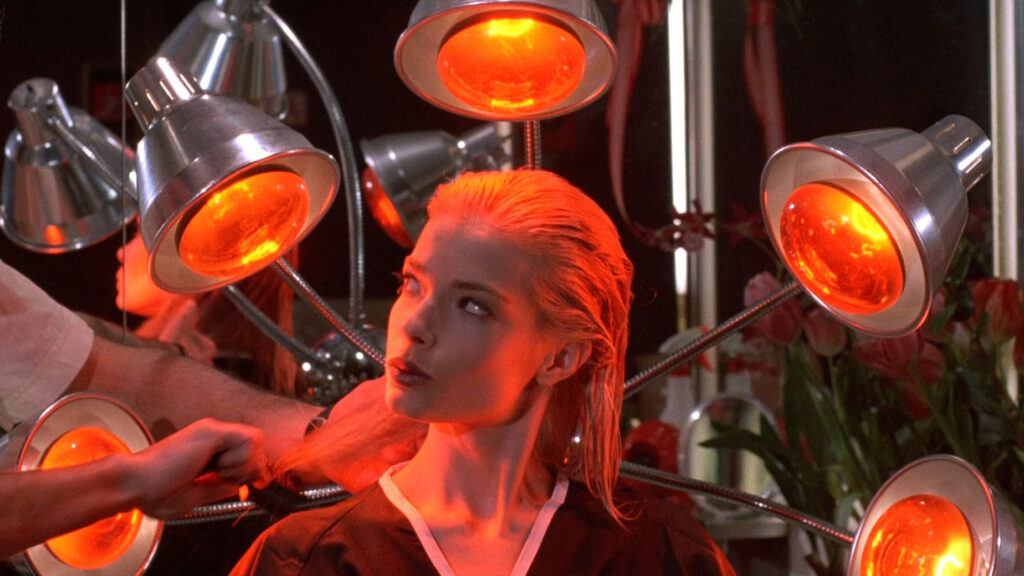
Wednesday, October 9 at 7:30 PM / NEIU
SPECIAL EFFECTS
Directed by Larry Cohen • 1984
Iconoclast Larry Cohen can always be relied on to serve up films that are ridiculous, wild, and idea-rich beneath their trashy surfaces, and the under-seen Special Effects is no exception. Eric Bogosian stars as Chris Neville, a recently disgraced Hollywood filmmaker and full-time slimeball who secretly films his seduction and murder of an aspiring actress named Andrea (played by renaissance woman Zoë Lund). Like the devil himself, Neville lures anyone searching for Andrea into doing his bidding: to build a feature film around this real-life murder footage. Doubles and false faces fill out Neville’s cast and crew. Andrea’s devoted sad-sack husband (Brad Rijn of Smithereens) is cast as himself, an Andrea look-alike (also played by Lund) takes on the role of the murder victim, and an inept homicide detective trades detecting for a producer credit. Based on a screenplay Cohen wrote in the late ’60s, Special Effects drags the plot of Vertigo onto Cohen’s home turf, the grimy world of exploitation filmmaking. This small-scale production made with New York City artists and weirdos saw a middling theatrical release and went straight to video, never receiving the same attention as a much more well-known Hitchcock homage released the same year, Brian De Palma’s Body Double. But contemporary critics imply that an injustice has been done, like author Tony Williams who claims, “Cohen is a more genuine heir of Alfred Hitchcock… De Palma emphasizes style over content, Cohen better develops the radical aspects of Hitchcock’s work.” We can let the Brian and Larry camps duke that one out on their own, but Special Effects should have enough style and brains for everyone without sacrificing Cohen’s madcap sensibilities. Feel like garroting an incompetent employee with some 35mm film? Clear the set and go ahead! That’s show business, baby. (RL)
106 min • Hemdale • 35mm from Park Circus
Preceded by: “Ghostbusters Promo Reel” (1984) – 13 min – 35mm
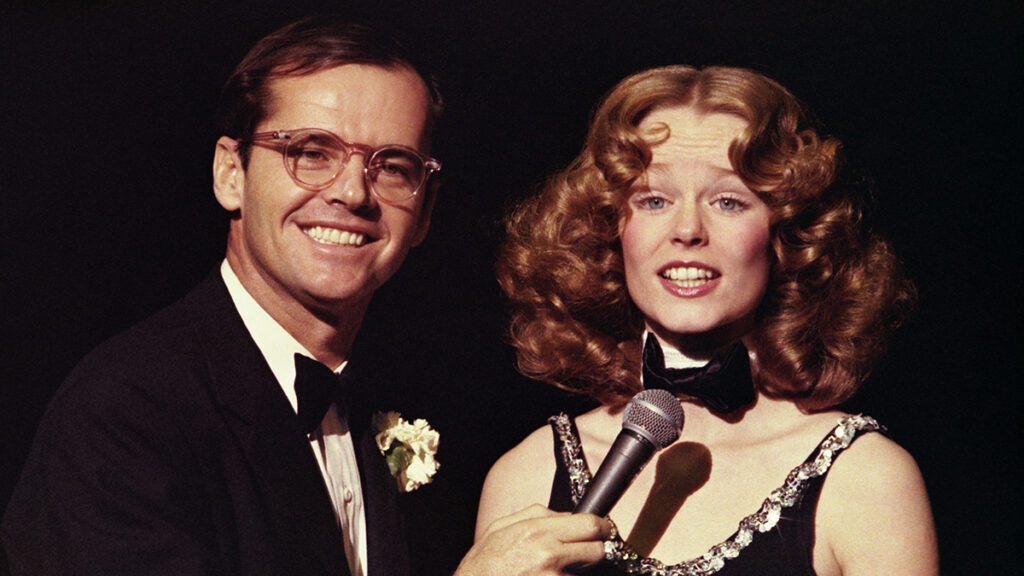
Saturday, October 12 @ 11:30am / Music Box Theatre
THE KING OF MARVIN GARDENS
Directed by Bob Rafelson • 1972
After charting the course for a new kind of American art film amid the bowling alleys and oil fields of Five Easy Pieces, Bob Rafelson and Jack Nicholson embarked on a sullen and perplexing follow-up. Named after a moderately desirable Atlantic City parcel familiar to Monopoly players everywhere, The King of Marvin Gardens imparts much the same message as the board game: property is a racket. Nicholson stars as David Staebler, a morose, anti-affable radio host, a penny-ante Paul Harvey for Philadelphia’s night owls. He wanders home at dawn, to be fact-checked by his only listener — his grandfather. (“I never stuck a model train in your hamburger. It was a cricket from a Cracker Jack box.”) Summoned to Atlantic City by Jason, his temporarily incarcerated wheeler-dealer brother (Bruce Dern), David gets pulled into a long-shot real estate scheme to bring gambling and revelry to a neglected Hawaiian isle. Ensconced at an aging boardwalk hotel once favored by Woodrow Wilson, Jason boasts of 96%-finalized deals, dines over lobster with potential Japanese investors, cavorts with his girlfriend (Ellen Burstyn) and her squirt gun-wielding stepdaughter (Julia Ann Robinson, stunning in her only major role), and throws around the name of a local underworld financier (Scatman Crothers) one too many times. Beautifully photographed by László Kovács in the winter light of an Atlantic City boardwalk that would soon be demolished to erect a new class of casinos even Jason Staebler would find gauche, this tonally weird, self-consciously (and self-mockingly) literary film remains one of the mordant glories of seventies American cinema. (KW)
104 min • BBS • 35mm from Sony Pictures Repertory
Preceded by: “Organ Grinders Swing” (Fleischer Studios, 1937) – 7 min – 16mm
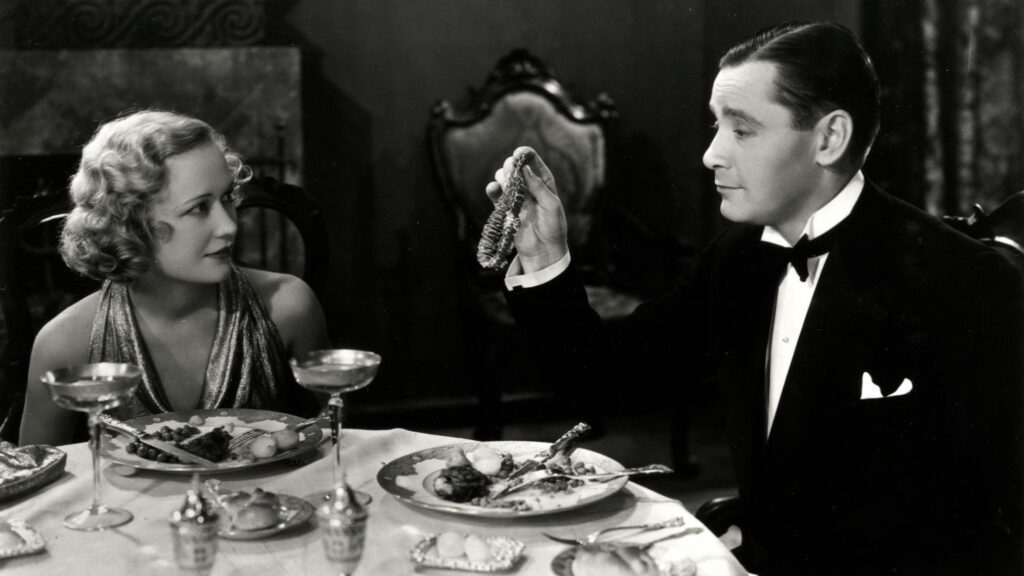
Wednesday, October 16 @ 7:30 PM / NEIU
TROUBLE IN PARADISE
(Rescheduled from last season)
Directed by Ernst Lubitsch • 1932
Many directorial stars shine brightly in the wide and diverse CFS galaxy, but if we’ve had one North Star over the years, it’s surely been Mr. Lubitsch. Since spring 2011, we’ve averaged about one of his films per year — yes, stat-hounds, this marks our thirteenth Lubitsch-helmed title on the books (with a fourteenth close on its heels), almost double that of the nearest competitor (sorry, Mitchell Leisen!). Naturally, we’ve taken our time getting around to showing what’s arguably his most celebrated effort, but here we are. Warm, debonair Herbert Marshall and sparkling, impish Miriam Hopkins breeze lusciously onto the screen as newly acquainted con artist/jewel thieves improvising a transcontinental tarantella that, with the addition of Kay Francis’s wealthy perfume magnate as their mark, becomes a delicious pas de trois and one of filmdom’s most iconic and enduring love triangles. All three principals exhibit that rare charm one associates with the Marx Brothers or Marilyn Monroe — they seem almost to have burst into the movie from some higher charismatic plane and convinced the other actors to go along with their idea of fun. (And Hall of Fame supporting players Edward Everett Horton and Charlie Ruggles are happy to oblige.) Everyone here vibrates higher. Despite this momentum, or perhaps because of it, Trouble is a movie that never seems to be trying to be anything more than it is – and therefore becomes much more. Pre-Code ellipses abound, as do breathtaking, oversized Deco sets and witty, tantalizing, “just enough” exchanges (both verbal and non-) among the scheming players, right up until the final (silent) moments, the gentle perfection of which cannot fail to satisfy. (GW)
83 min • Paramount Pictures • 35mm from Universal
Preceded by: “The Pharmacist” (Arthur Ripley, 1933) – 19 min – 35mm
Co-presented with “Nostalgia Digest“, in celebration of 50 years of publication.
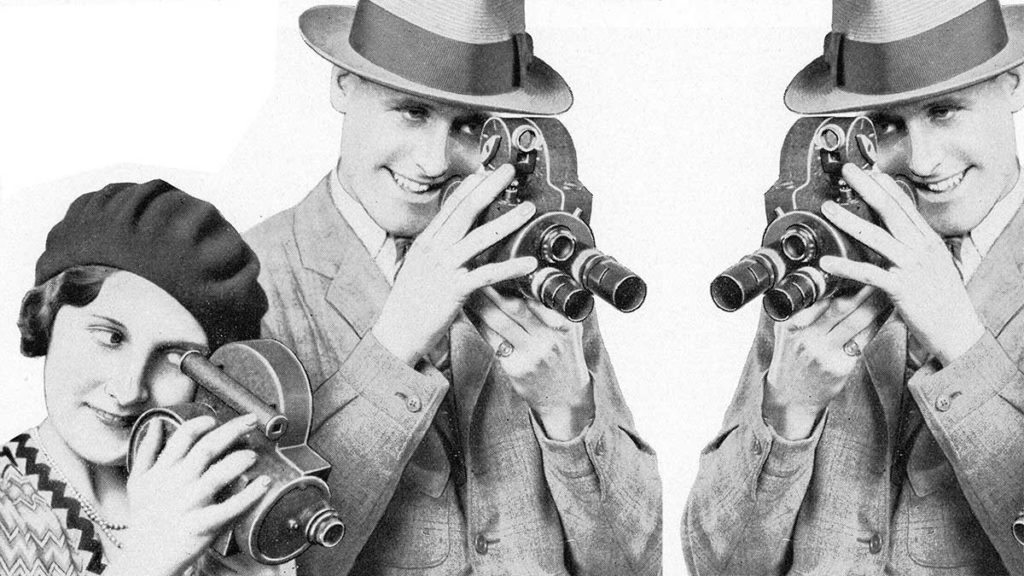
Saturday, October 19 @ 11am – 3pm / Chicago History Museum
HOME MOVIE DAY
Home Movie Day is dedicated to YOUR home movies. Drop in between 11 AM and 3 PM and archivists and projectionists will inspect and project any 16mm, 8mm, or Super 8 home movies that walk in the door. Don’t have any films? Feel free to just sit back and enjoy the show!
Presented by Chicago Film Archives, Chicago Film Society, and the Chicago History Museum
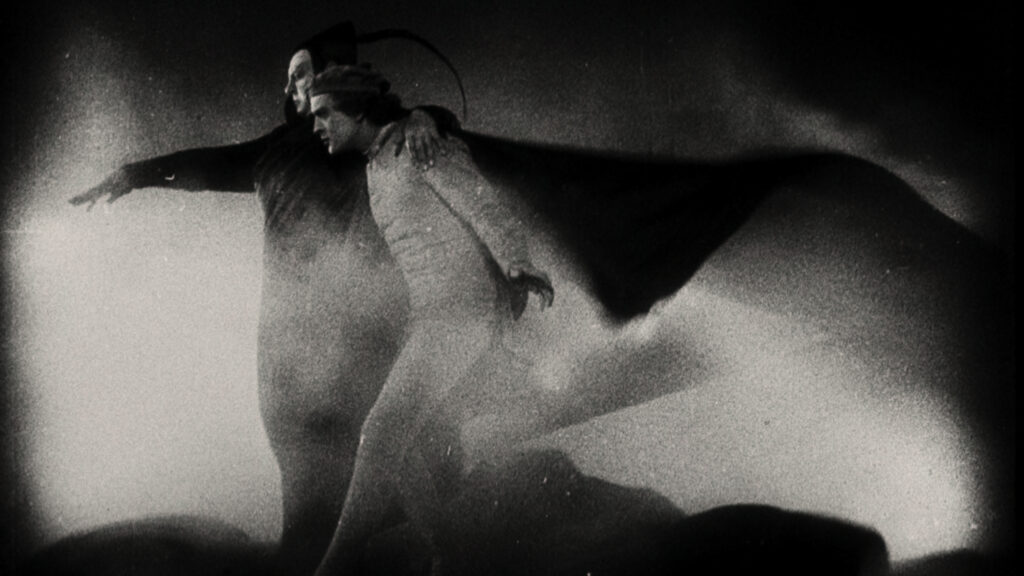
Sunday, October 20 @ 8:00 PM / Music Box Theatre
FAUST
Directed by F. W. Murnau • 1926
In the years immediately following the First World War, F. W. Murnau produced over a dozen films across every stratum of the German film industry, from independent productions like the beleaguered (but later canonized) Nosferatu to studio films made at Weimar powerhouse Decla-Bioscop. His career moved steadily upwards until his emigration to the U.S. in 1926. Faust, Murnau’s final European production — at the time the most expensive feature produced in Germany — premiered months after he’d decamped to Hollywood to direct Sunrise (1927). In his absence, Faust was greeted indifferently by German audiences, and box office receipts fell some distance from covering production costs. Unlike the existentially bored scholar who served as muse to Marlowe and Goethe, Murnau’s Dr. Faust is a pure-hearted man at the center of a celestial war. Faced with a barrage of travails and temptations engineered by the demon Mephisto, Faust endures episode after episode of ritual debasement, unwittingly shuffling down the path to corruption as the forces of good and evil, in a series of ravishing, abstract set pieces, battle for his mortal soul. The fussy, gothic excrescences of Faust have only grown in iconographic magnitude over time, permeating through Disney’s Fantasia, influencing scads of deathrock and metal album covers, and enduring as an aesthetic beacon for a century’s worth of Satanic phantasmagoria. (CW)
107 min • UFA GmbH • 35mm from Kino Lorber
Live accompaniment by Maxx McGathey!
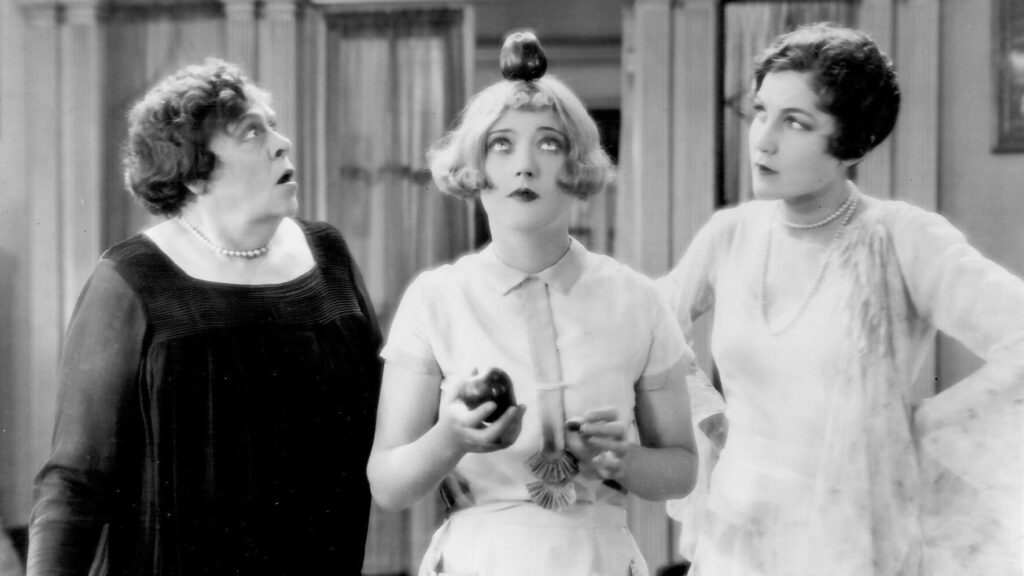
Sunday, November 3 @ 8:00 PM / Music Box Theatre
THE PATSY
Directed by King Vidor • 1928
Broadway showgirl Marion Davies became a movie star through the dedication (and pocketbook) of her paramour and patron William Randolph Hearst. Yes, Davies was the inspiration for Susan Alexander Kane, the talentless opera star foisted heedlessly upon the world in Citizen Kane — but that gloss shortchanges Davies as an actress and an artist. One impediment to appreciating Davies’s range was often Hearst himself, who decreed that her world-historical beauty and vivaciousness would be commemorated in costume-heavy period pictures that had all the spontaneity of a high school history textbook. Davies’s admiration for The Big Parade inspired her to request that film’s director, King Vidor, to oversee The Patsy, a fleet, modern comedy about a woman striving to assert her own personality in a world of male indifference and imbecility. Davies stars as Patricia Harrington, the neglected younger sister of a social butterfly (Jane Winton) who barely bothers to keep track of her own beau. But Pat is no Patsy — she’ll land upon a luminous, boy-friendly personality through careful study of books and the silver screen. Though based on a successful Broadway comedy, Vidor had the good sense to ask Hearst, “Why don’t we forget the play that’s written and let Marion do as she does?” The result, in the words of film scholars Raymond Durgnat and Scott Simmon, is a performance where “her vitality is her healthy defense against Kane-styled pretensions in high society and art.” (KW)
84 min • Cosmopolitan Productions • 35mm from Library of Congress
Preceded by: TBA
Live musical accompaniment by Jay Warren!
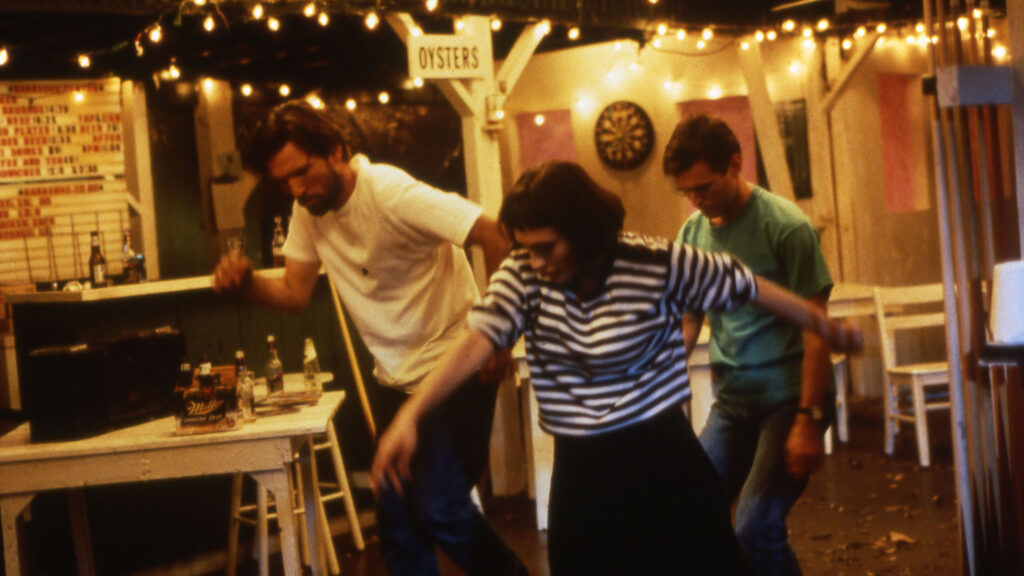
Wednesday, November 6 @ 7:30 PM / NEIU
SIMPLE MEN
Directed by Hal Hartley • 1992
In Gen X auteur Hal Hartley’s Simple Men, the men are indeed simple, but not entirely unsuccessful ($650,000 in stolen computer parts isn’t nothing). The third entry in his Long Island Trilogy, the film is filled with Hartley’s idiosyncratic humor and heart — it is about family, and it is about romance. In the film, two brothers (one lands a scholarship and the other lands on the frontpage of the newspaper) go on a road trip to find their deadbeat father, an infamous domestic terrorist. On the way they meet beautiful women, talk God and feminism, have an impromptu dance party, and reconnect. Hartley’s expressively inscrutable protagonists tease out their feelings in casual yet revealing conversations; small talk on big issues. As feminist scholar bell hooks wrote, “More than any other contemporary film-maker [Hartley] turns the camera on to masculinity. He lets us see aspects of maleness from the perspective of male abjection and vulnerability.” Hartley’s men may be goofy, but they are hardly unfeeling; their romantic traumas and disappointments consume their minds and direct their conversations. They are confused. On the other hand, Hartley’s odd, independent, and uncontrollable women don’t answer to anyone; they are too busy tearing up the dance floor. Simple Men is a remarkably fun time that also strips his ideas down to their basics, exposing their profundity. “Falling in love is like sticking an ice pick in your forehead, but we keep doing it. We hurl ourselves into the cauldron of passion. The bottomless pit of desire.” (RIN)
105 min • True Fiction Pictures • 35mm from Chicago FIlm Society collections, gift of David Bordwell
Preceded by: Hal Hartley trailer reel – 10 min – 35mm

Wednesday, November 13 @ 7:30pm / NEIU
MOONLIGHT AND PRETZELS
Directed by Karl Freund • 1933
All the studios were trying to duplicate Busby Berkeley’s musical extravaganzas in 1933, but Universal’s attempt, Moonlight and Pretzels, stands out for its sincerity and its shamelessness: the climactic “Dusty Shoes” number is an undisguised rip-off of “Remember My Forgotten Man,” likely conceived and choreographed in an afternoon shortly after Gold Diggers of 1933 opened. (The score is predominantly the work of Jay Gorney and future Wizard of Oz lyricist E.Y. “Yip” Harburg, best known at that time as the writers of Depression anthem “Brother, Can You Spare a Dime?”) The show starts with washed-up singer George (Roger Pryor) flirting with small-town record store operator Sally (Mary Brian). One thing leads to another, and his love song to her becomes a great success; his Broadway follow-up, Moonlight and Pretzels, promises a characteristic mix of romantic ambition and a disarmingly common touch. (What other musical, even in the ultra-topical ‘30s, boasts a song as straightforwardly proletarian as “I’ve Gotta Get Up and Go to Work”?) Directed with considerable panache by Karl Freund in between his twin landmarks of the ’30s horror cycle (The Mummy and Mad Love), Moonlight and Pretzels emerges as the fullest expression of a particular kind of low-budget, high-energy musical prior to Corn’s-A-Poppin‘. Also featuring top-billed Leo Carillo as bumbling impresario Nick Pappacropolis, beer garden hijinks, scads of scenes shot in New York’s Casino Theatre, and sustained fun. (KW)
80 min • Universal • 35mm from Universal
Preceded by: “Jammin’ the Blues” (Gjon Mili, 1944) – 10 min – 35mm
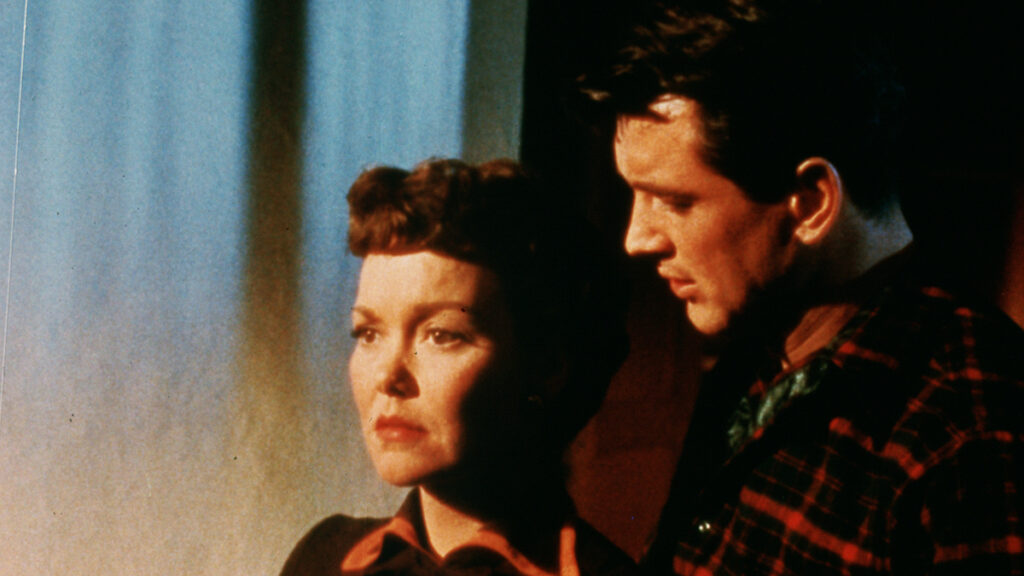
Wednesday, November 20 @ 7:30 PM / NEIU
ALL THAT HEAVEN ALLOWS
Directed by Douglas Sirk • 1955
“To thine own self be true. That’s Ron.” Cary Scott (Jane Wyman), a moneyed New England widow and mother of two rather unlikable children, faces off against societal expectations, familial pressure, vicious gossip, pesky television salesmen, and her own anxieties — all in the name of love. Hunky arborist Ron Kirby (Rock Hudson) offers Cary the unexpected: genuine love with a nonconformist, a younger man with nothing to prove but his own devotion. He also reminds her of her own desirability, and in turn of her own desires. The transcendent film followed Sirk’s 1954 hit Magnificent Obsession, another visually rhapsodic and unabashedly romantic melodrama starring Wyman and Hudson. Wyman was 38 and Hudson was 29 at the time of the release of Heaven; still, Cary must prove she’s not quite dead yet. Will she be able to marry Ron? The stakes feel as high as the cliffs of the countryside Ron inhabits. As Cary wavers between love and conformity, the seasons flip decisively from fall to winter. The vibrantly artificial suburban setting is as captivating to the eye as it is unnerving; it was very obviously shot on a backlot. It depicts a perfect ideal of autumn, along with snow that’s never looked as white, and cruelty that’s never been more pointed — ordinary lives trapped in a snow globe. (RIN)
89 min • Universal-International • 35mm from Universal
Preceded by: “Toccata for Toy Trains” (Charles & Ray Eames, 1957) – 14 min – 35mm from Library of Congress
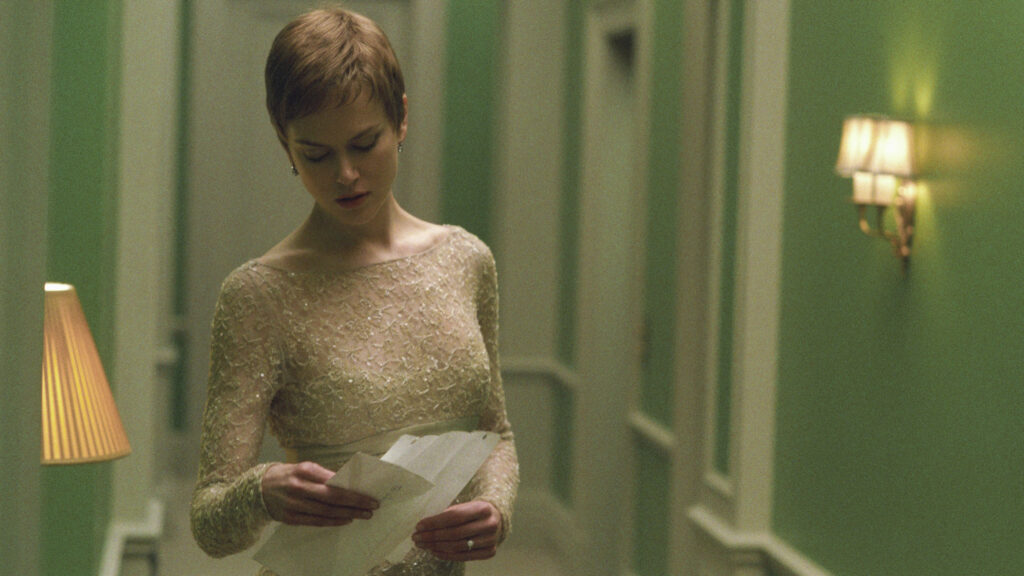
Monday, November 25 @ 7:00pm / Music Box
BIRTH
Directed by Jonathan Glazer • 2004
Wealthy New York widow Anna (a miraculous Nicole Kidman) accepts the marriage proposal of Joseph (Danny Huston), whom she doesn’t particularly love (not that it deters him), years after the sudden death of her husband, a man she married 30 times in 30 days. A ten-year-old boy (a convincing Cameron Bright) arrives at the engagement party to change everything, claiming to be the reincarnation of her dead husband Sean. Largely ridiculed upon its release, Jonathan Glazer’s still-controversial Birth has always had the hallmarks of a cult classic: fervent defenders, frequently indefensible female characters, a star-studded cast, and a reclusive auteur. Birth is a meditation on grief and its aftershocks. What is the film’s biggest tragedy? The control given up by daring to love anyone at all. Astutely shot by Harris Savides, the film is seductively gloomy — tastefully grainy, assertively underexposed, and largely lit overhead. Muslin was used for light diffusion, as though the film itself is swathed in a burial shroud. This is not to say the film isn’t pleasurable: Lauren Bacall delivers a memorable zinger in her distinctive rasp, Anne Heche gives the performance of her life, and the magisterial score from Alexandre Desplat leads you on a waltz straight into the abyss. Still, you must believe in the film’s improbable premise — much like Anna. You must also accept the inevitable (it will likely make you sad). It might even anger you. What would a satisfying conclusion be? Anna is willing to risk almost everything to find out. As fantasy and drama, Birth is deathly serious and strikingly original, a 21st century Luis Buñuel exercise co-written by his long-time collaborator Jean-Claude Carrière. Its thematic nature is thorny and uncomfortable; its $20 million budget now seems practically impossible. Nicole Kidman, with a Rosemary’s Baby pixie cut and Mia Farrow-like obedient rich-girl naïveté, delivers perhaps her bravest performance. To her, Sean’s reentrance is a balm after a decade of suffering, no matter how wrong or how unlikely it really is. Sequestered in her penthouse apartment like a princess in a fairytale, she draws us into her magical thinking, and it’s difficult not to follow her. (RIN)
100 min • New Line Cinema • 35mm from Park Circus
Preceded by: Nicole Kidman trailer reel – 10 min – 35mm
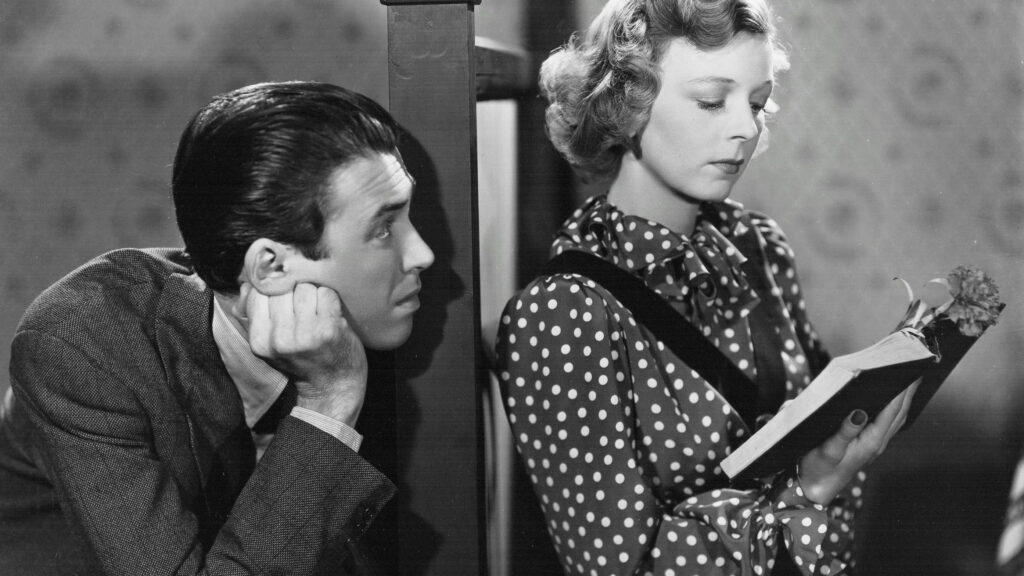
Monday, December 2 @ 7:00pm / Music Box Theatre
THE SHOP AROUND THE CORNER
Directed by Ernst Lubitsch • 1940
Inspired in part by Ernst Lubitsch’s father’s experiences running a small tailor shop in Berlin, The Shop Around the Corner stars James Stewart and Margaret Sullavan as antagonistic coworkers at a small leather goods store in Budapest, Hungary. They work for the warm but nervous Mr. Matuschek (Frank Morgan), but their minds are often on other things: without knowing it, Stewart and Sullavan have been sending love letters to one another in an anonymous pen-pal courtship, letters so steamy and intellectual that the rest of us could only dream of them. Though Lubitsch thought of The Shop Around the Corner as a little picture (its production cost was a relatively lean half-million 1940 dollars), it may be his most universal — an empathetic, loving, and ironic comedy that allows us to see the heartaches, hopes, frustrations, and daydreams of characters who can barely begin to understand people they work with nearly every day. A romance on the surface, the film also has a unique and genuine feel for the fragile ecosystem of small businesses, and the complicated, unconventional families that inhabit them. (JA)
99 min • M-G-M • 35mm from the Library of Congress, permission Park Circus
Preceded by: “Bargain Madness” (Dave O’Brien, 1951) – 9 min – 35mm
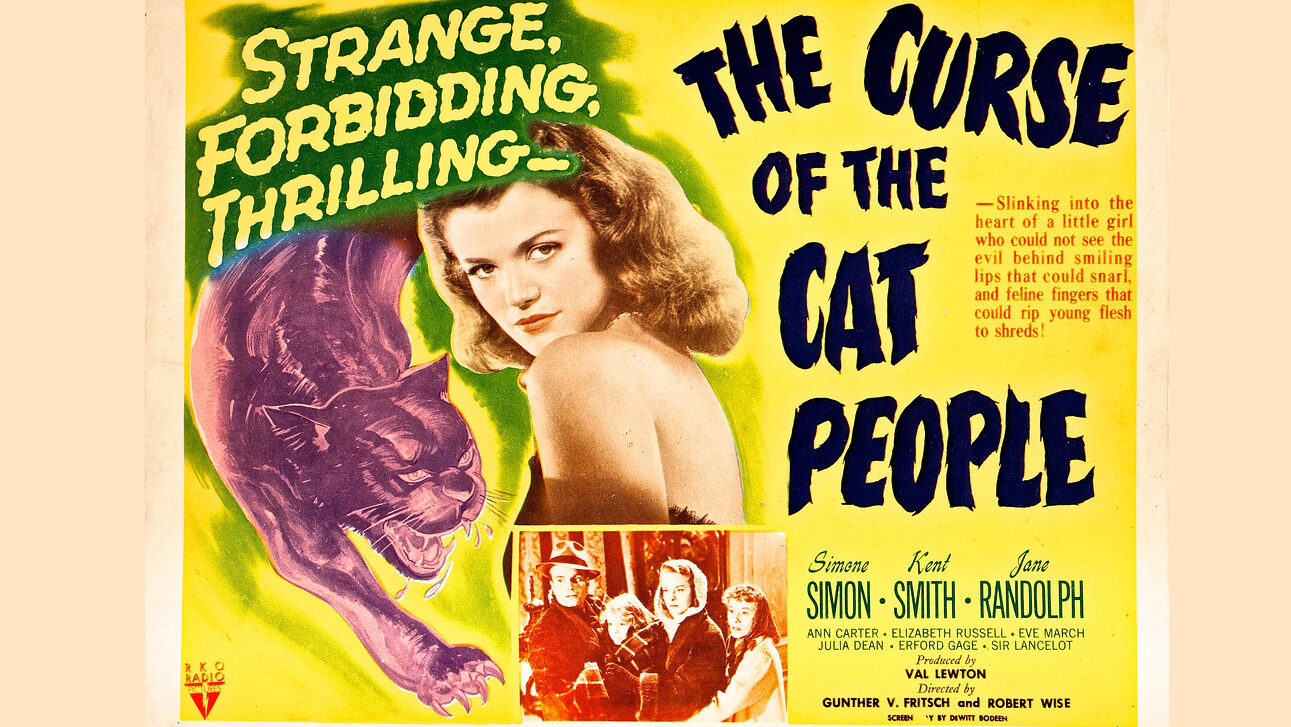
Wednesday, December 11 @ 7:30 PM / NEIU
THE CURSE OF THE CAT PEOPLE
Directed by Gunther von Fritsch & Robert Wise • 1944
During the remarkably fruitful four years Val Lewton spent as head of RKO’s horror division, the dozen or so films he saw through production were made with three simple constraints: a budget of $150,000, a runtime of 75 minutes or less, and a studio-dictated title around which each film’s script would be written. An uncredited screenwriter on all of his productions, Lewton thrived creatively under these circumstances, disguising a paucity of resources with shadowy, dread-stricken atmospherics and frequently ignoring the plot directions implied by his assigned titles. A prime example of this last point is The Curse of the Cat People, a film packaged to suggest a cash-in sequel to Lewton’s breakout horror hit Cat People but delivering instead a melancholic supernatural Christmas fantasy. Picking up some years after the original film, Curse focuses on Amy (Ann Carter), the moony, introverted daughter of Cat People protagonist Oliver Reed (Kent Smith). Ostracized by her classmates, Amy seeks out the companionship of some strange adults living nearby, befriending the ghost of her father’s cursed first wife Irena (Simone Simon) and becoming an unwitting participant in a seething familial conflict that constantly threatens to turn violent. Initially assigned to novice helmer Gunther von Fritsch, The Curse of the Cat People wound up (uncharacteristically for Lewton) behind schedule and over budget, which necessitated promoting RKO editor Robert Wise to the director’s chair, yielding superlative results. Every bit as unsettling as its predecessor, The Curse of the Cat People proves December is a natural fit for Lewton’s trademark disquieting ambience, dredging up all the sadness and horror you could possibly feel spending the holidays with your family. (CW)
70 min • RKO Radio Pictures • 35mm from Library of Congress, permission Swank
Preceded by: “I Taw a Putty Tat” (Friz Freleng, 1948) – 7 min – 35mm
Programmed and Projected by Julian Antos, Becca Hall, Rocío Irizarry Nuñez, Rebecca Lyon, Tavi Veraldi, Kyle Westphal, and Cameron Worden.
Research Associate: Mike Quintero
Ambassador / Additional Capsules: Gabriel Wallace
The Chicago Film Society is a 501(c)(3) nonprofit organization. CFS acknowledges support from the Illinois Arts Council and from the City of Chicago Department of Cultural Affairs & Special Events’s CityArts grant program.
Heartfelt thanks:
Shayne Pepper, Cyndi Moran, Robert Ritsema, & Jose Aguinaga of Northeastern Illinois University; Brian Andreotti & Ryan Oestreich of the Music Box Theatre; David Antos; Brian Belovarac of Janus Films; James Bond of Full Aperture Systems; Chris Chouinard of Park Circus; Justin Dennis of Kinora; Hal Hartley; Jason Jackowski of Universal Pictures; Dave Jennings of Sony Pictures Repertory; Steven Lloyd; Kathryn Wilson; Heather McAdams & Chris Ligon; Douglas McLaren & Ben Ruder of the University of Chicago Film Studies Center; Lynanne Schweighofer & Andy Whitmore of the Library of Congress; George Schmalz of Kino Lorber; Leila Sherbini; Tommy José Stathes; Nancy Watrous, Olivia Babler, & Mickey Gral of Chicago Film Archives; Hannah Yang; and Gabrielle Lyon. Particular thanks to CFS board members Raul Benitez, Mimi Brody, Steven Lucy, Brigid Maniates, & Artemis Willis, and CFS advisory board members Brian Block, Lori Felker, & Andy Uhrich.
And extra special thanks to our audience, who make it all possible!


